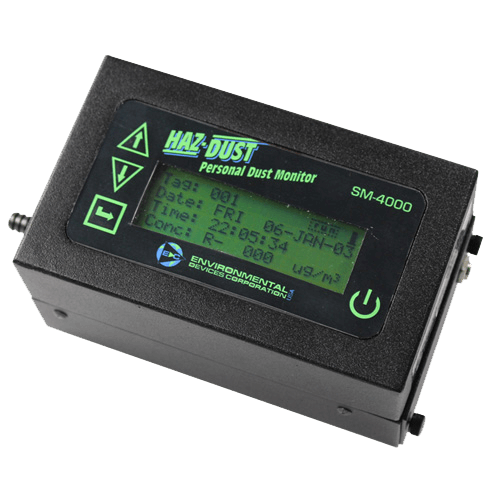Air Monitoring Device For Silica

How do you monitor silica dust.
Air monitoring device for silica. In order to find out the silica concentration level two things need to happen. Read the full article nanozen s dustcount is a powerful and easy to use tool that helped pinpoint where our real silica issues lay. Silica monitor sm 4000 is a direct reading personal dust monitor optimized for the measurement of silica levels specified in the osha final silica rule calibrated to a known amount of silica dust sm 4000 provides direct readings for determination of peak silica concentrations for mitigation and lower twas the sm 4000 internal pump and gravimetric filter cassette directly behind the sensor. As this new rule for respirable crystalline silica exposure takes effect customers have asked the raeco rents team for help with the proper personal monitoring instruments.
Osha 29 cfr 1926 1153 d 2 v limits exposure the time of exposure to crystalline silica to 50 micrograms per cubic meter of air. And of course you re in the best hands as sgs galson currently meets all of the new laboratory qualifications for silica and we re ready to help. New regulations are changing standards for silica dust exposure. Under the rcs standard s scheduled monitoring option employers must conduct initial monitoring to assess the 8 hour twa exposure for each employee on the basis of one or more personal breathing zone air samples that reflect the exposures of employees on each shift for each job classification and in each work area.
To monitor specific areas area sampling detector tubes and pumps hand held electronic monitors or fixed wall mounted electronic monitors are used. The parameters of determining how to monitor for crystalline silica exposure can be found in in 29 cfr 1910 1053. The type of air monitor used to measure crystalline silica exposure and the level of crystalline silica exposure requiring respiratory protection is dependent on the size of the crystalline silica particles being generated. Approved sampling methods developed by niosh osha and msha exist for crystalline silica sampling.
Note the final rule reduces the permissible exposure limit for crystalline silica to 50 micrograms per cubic meter of air averaged over an eight hour shift. A health canada report examines talcum powder applications and studies the efficacy of real time dust monitors for monitoring and mitigating exposure risks. The physical state of the analyte gas aerosol vapor or combination thereof plays an important role in the air monitoring equipment selection process. Seasoned professionals and those new to the silica sampling process have questions on how to achieve the required appropriate exposure monitoring plan or schedule monitoring option.
Since the new osha respirable crystalline silica rule was issued many health and safety professionals have had to evaluate how they will achieve compliance.














































